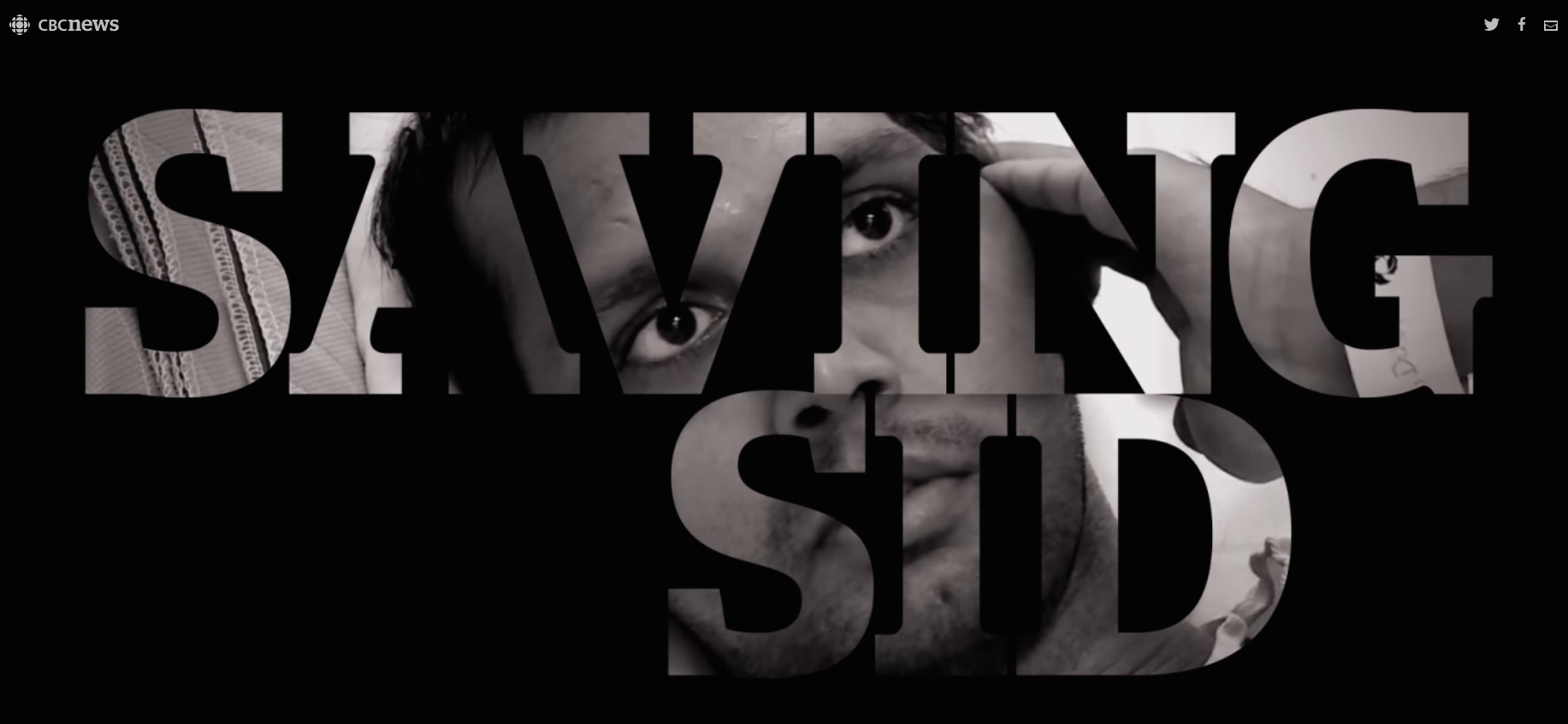Saving Sid, a 6,000-word interactive CBC feature, captured 260,000 page views in one day.
By Daniel Prinn
In April 2014, CBC producer Janet Thomson’s father, Robert Thomson, 88, had a stroke. After staying in intensive care at the Toronto Western Hospital, he was moved to a semi-private room that had a curtain down the middle.
One day, Thomson and her father heard Indian music coming from the other side. When she peeked around the curtain, she saw Sidharth Gupta. “It was quite a shocking sight,” said Thomson. “I had never seen anybody that looked like that before.” This was because part of Gupta’s skull was missing.
Gupta, 30, had had a massive stroke in February 2014 and was brought into the hospital after being found on the bathroom floor of a Toronto night club. By the time Thomson met him, he had already had a second operation, which had taken out a large portion of his brain.
His hair had already grown back but because part of his skull was missing, there was a “kind of a cereal bowl shape in the top of his head,” Thomson said. “That image haunted me and his eyes haunted me,” said Thomson. “Something about him got under my skin—in a good way. I just wanted to know more about him.”
Thomson’s curiosity sparked Saving Sid, the piece she produced for CBC’s News Interactives team and CBCNews.ca, with CBC features producer Andre Mayer. The story was published on Feb. 22, 2016, two days after the two-year anniversary of Sid’s life-changing stroke.
The piece was an opportunity for Thomson and Mayer to explore several issues. One was that people can have strokes at young ages. “We couldn’t ascertain why Sid had a stroke at age 30, but it raises awareness about the phenomenon,” said Mayer.
The piece was also an opportunity to examine larger issues, such as the challenges doctors can face in their efforts to keep people alive at all costs and quality of life issues that can follow for their patients.
In Gupta’s case, he wasn’t able to make decisions for himself as the effects of the stroke ravaged his brain. While he might have died without the radical second surgery to remove a portion of his brain, he wasn’t able to communicate whether he wanted to live with the extensive damage it would cause.
Gupta’s father now cares for him at home full-time in India. Gupta has learned to feed himself, say a few words and has so far exceeded his doctors’ expectations of his progress. Still, it is a far cry from the life he’d once lived. “What we wanted to figure out is if they think they made the right choice,” Mayer said of the decisions Gupta’s family and friends were forced to make during a very difficult time.
The story took about six months to produce from when Thomson started her interviews until it went live. During that period, the multimedia team created graphics and the design for the story.
Because of the nature of the story, they wanted it to feel like a magazine feature. At CBCNews.ca, typical feature stories are about 800 to 1,000 words. “But this was obviously a bigger story,” said Mayer. “There were lots more components, a narrative to it.”
Thomson put down her first draft at about 7,000 words. The pair then edited certain areas and fleshed out other parts. The story is broken into chapters so it’s easier to digest. If a reader wants to stop reading at one point and return later, they know where they had stopped.
As soon as Mayer saw the headline that ran with the article, Saving Sid, come together on the page with the video of Gupta, feeling the side of his caved-in skull in the background, he said it all fit together.
“It was an astounding, arresting kind of image,” said Mayer. “I was a little resistant to it at first just because it was so shocking. It almost felt a bit tabloid-y at first because the CBC doesn’t go for sensational sort of journalism.
“Eventually, I realized it drew people in. Our story wasn’t sensational; it was trying to be as humane about it as possible, and ultimately, as images go, it was definitely a winner in terms of getting people’s attention.”
The first day the story ran it had 260,000 page views. This number climbed to 360,000 views by the third day. On average, readers spent about six minutes with it.
The last statistic is an important one: there is a hyper-vigilance in not losing the reader’s attention. “We have to make sure that we keep the pace good and not make the news too baggy,” said Mayer.
CBC has gotten strong feedback about the story. Some people who’ve emailed wanted to know how to donate money to the Gupta family because they were so moved by his story. Some wanted to discuss the ethical dilemma of surgeons removing parts of someone’s brain.
“There was one woman who does music therapy and she wanted to get in touch with the family,” said Mayer. “She thought maybe some of her expertise could be of help.”
Thomson also talked with Sid’s sister Isha Gupta after the story was written. She confessed that she cried through most of the piece. “It was very hard for her to read because she was reliving everything,” said Thomson.
Still, Thomson is fond of her experience producing the story. “I would call the whole thing a labour of love for me,” said Thomson. “Just because it was a very emotional time in my life as well and because of the parallels with my father’s recovery and Sid’s recovery.”
Daniel Prinn is an Algonquin College journalism student, currently working as an intern for Ottawa Sportspage. He is a frequent blogger of film reviews and has contributed to the Orleans Star.

